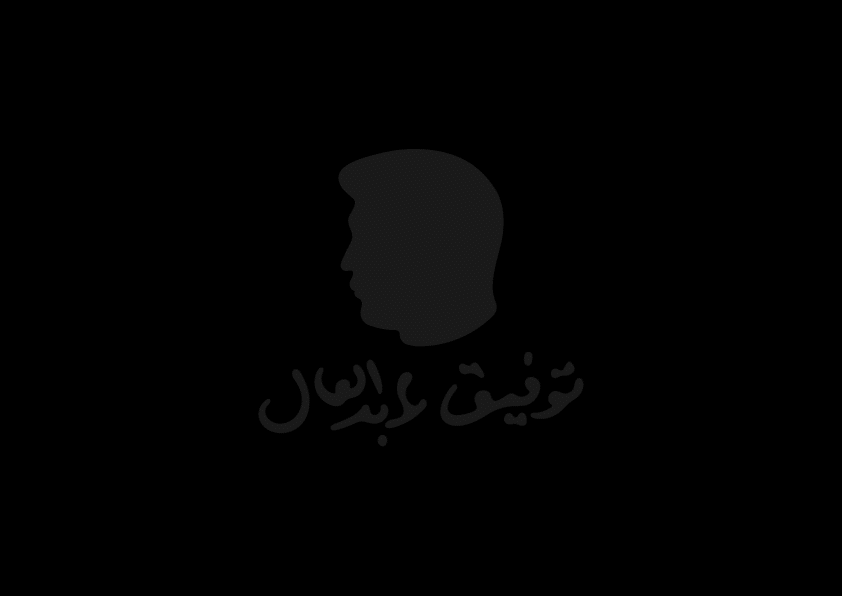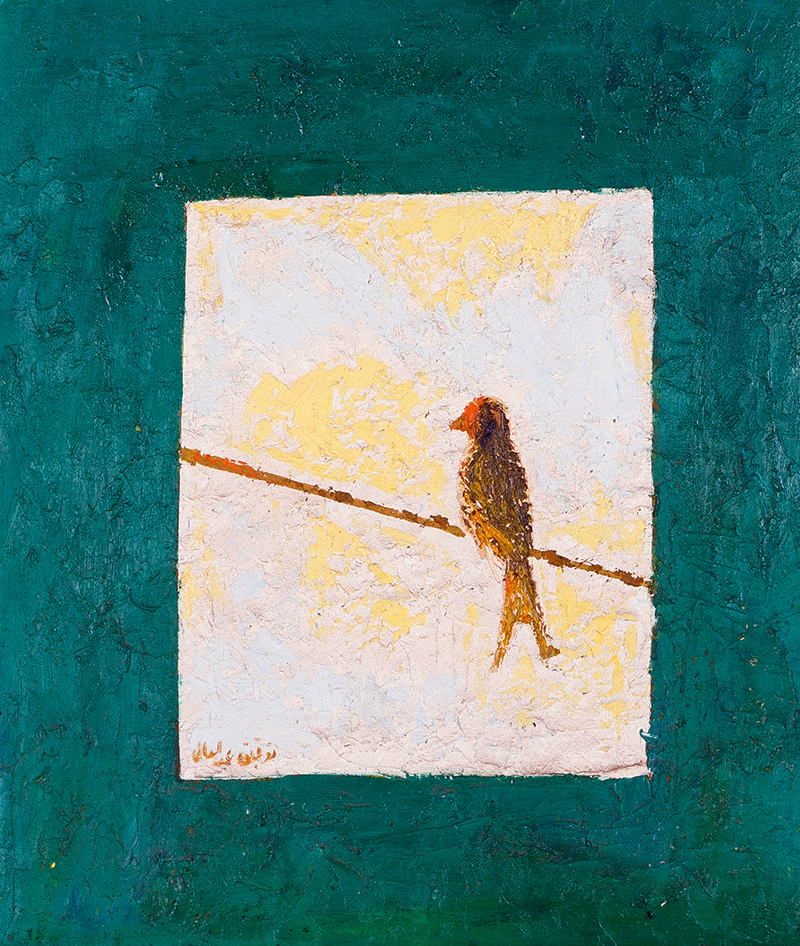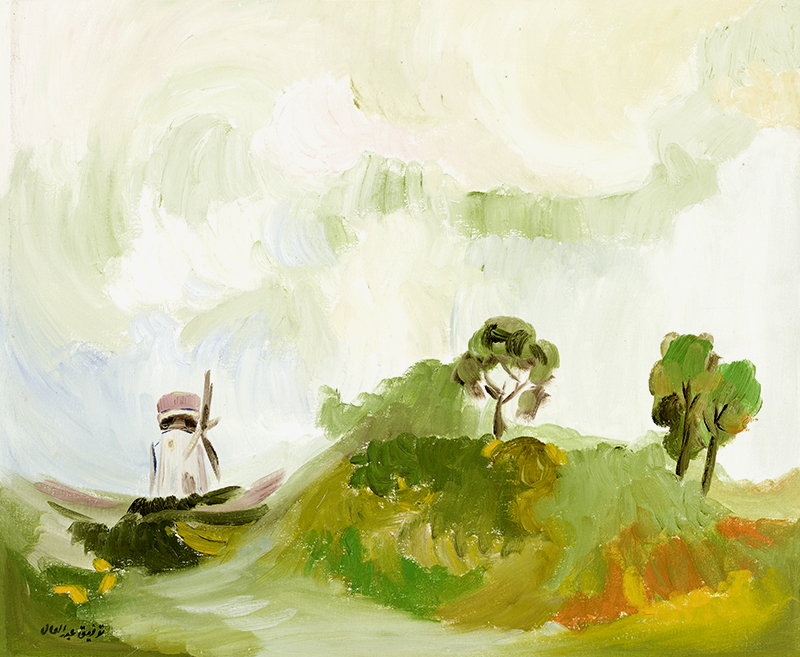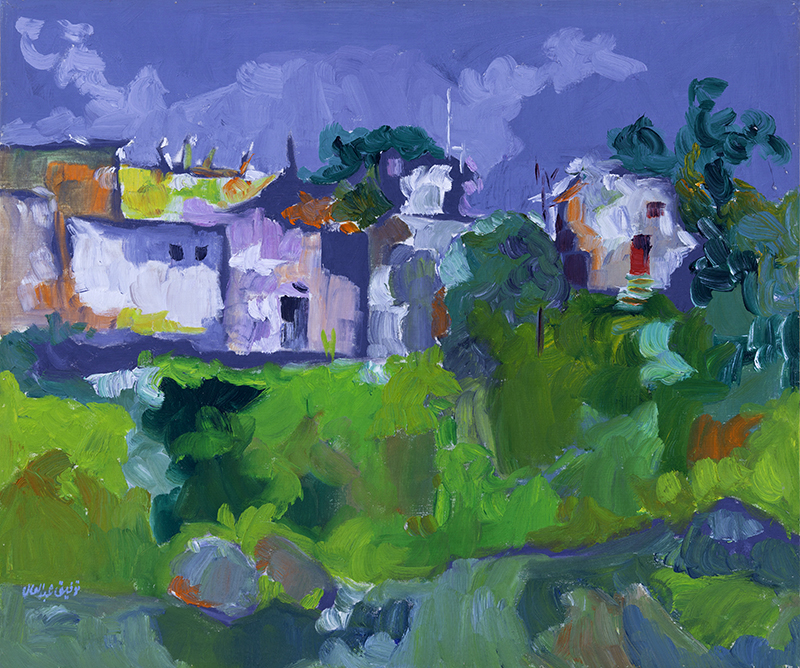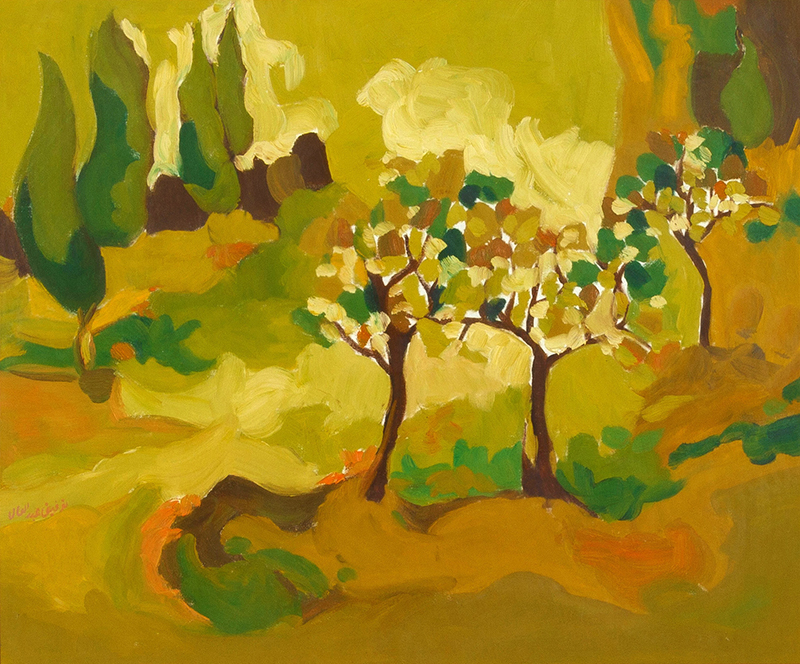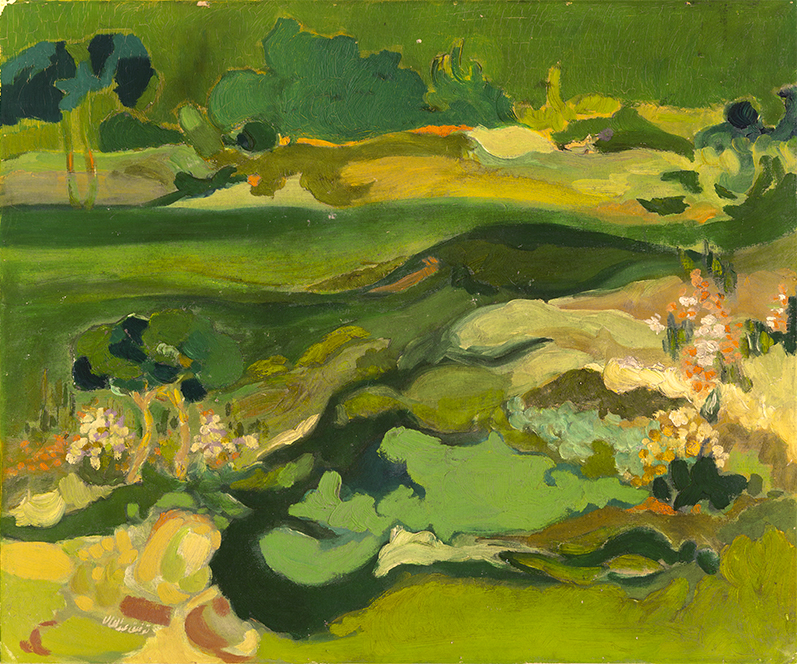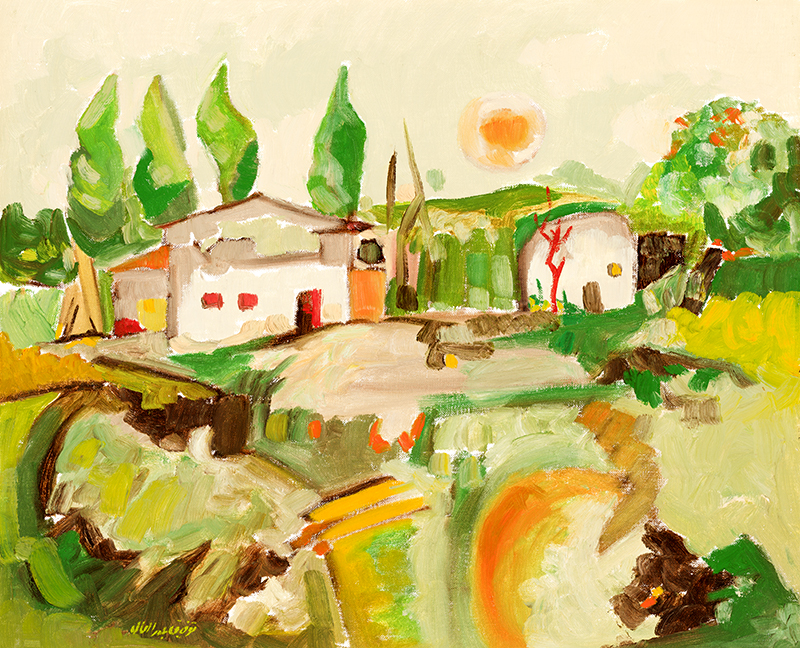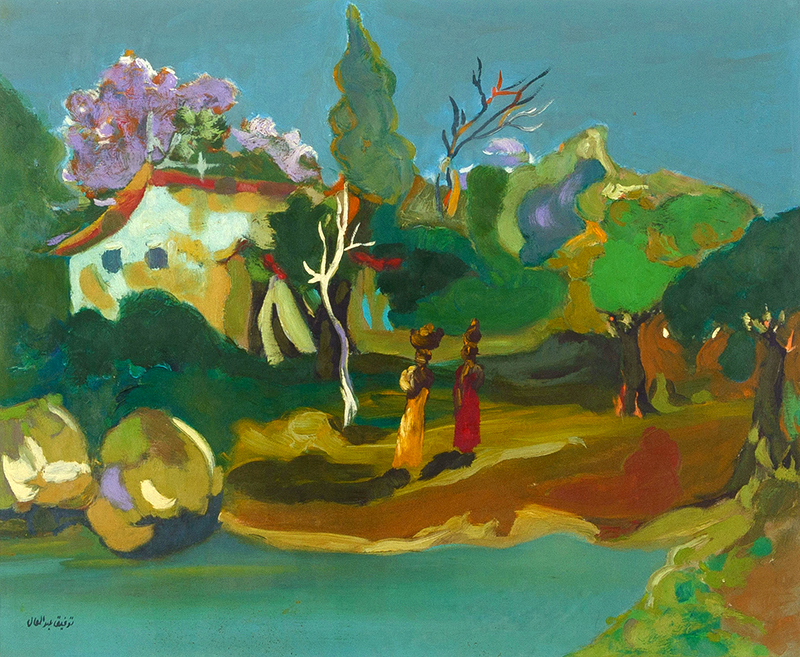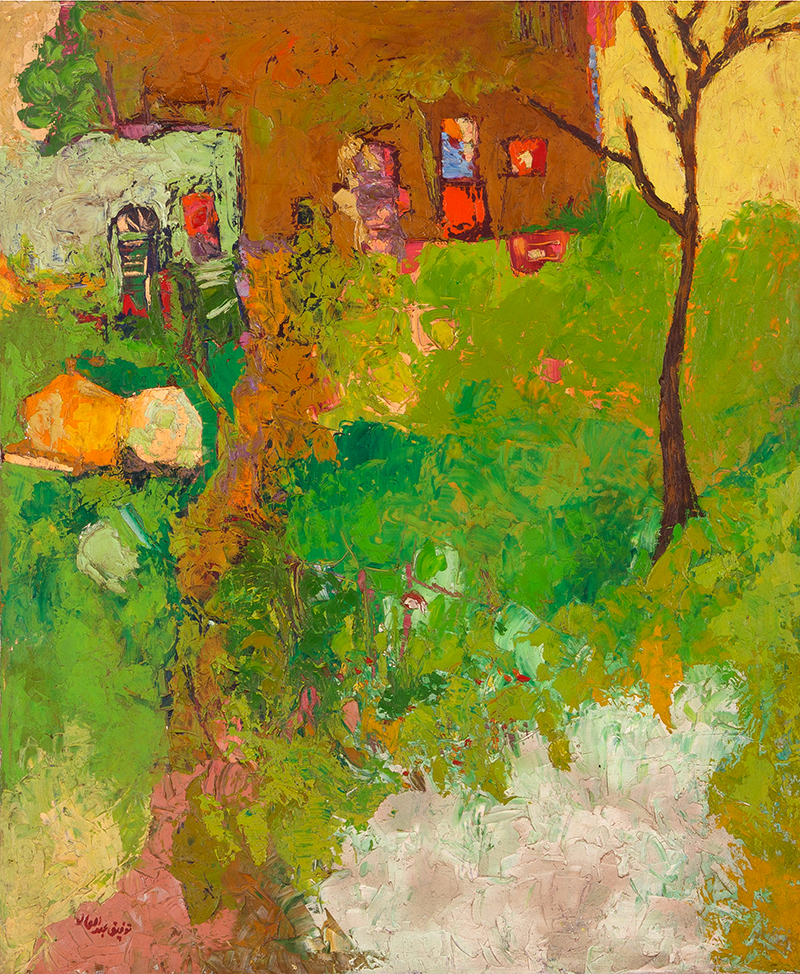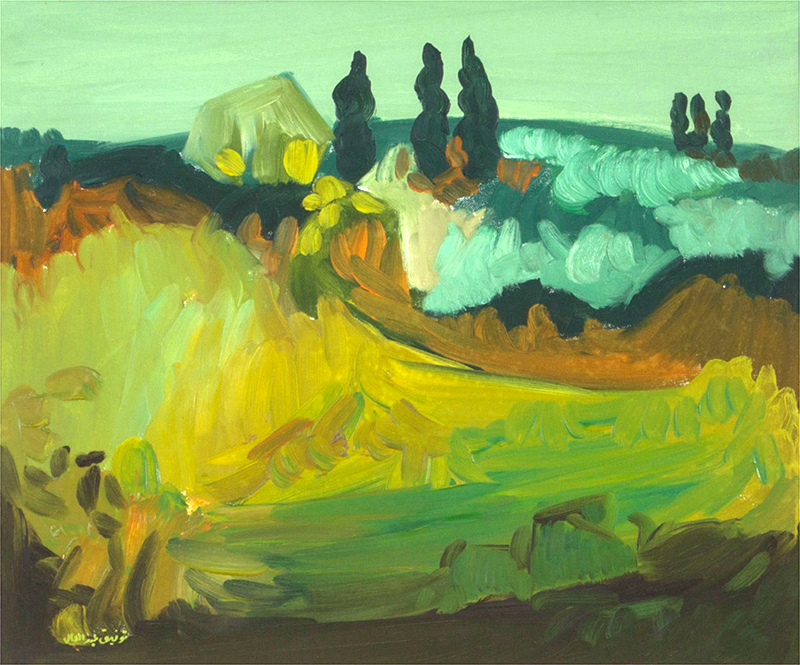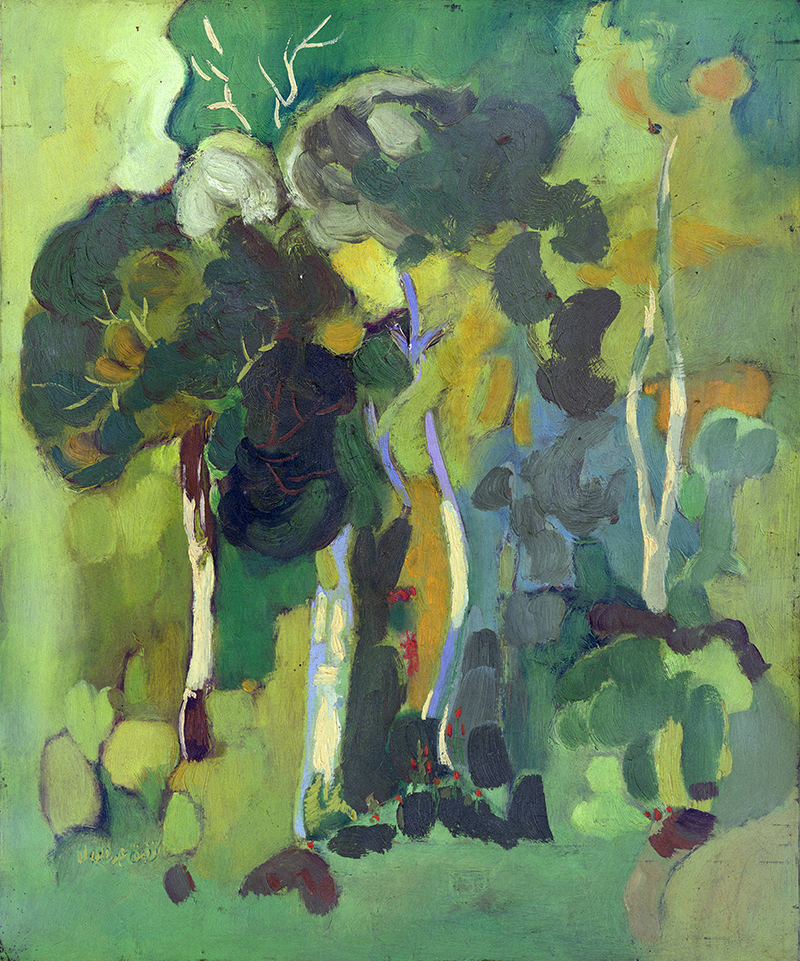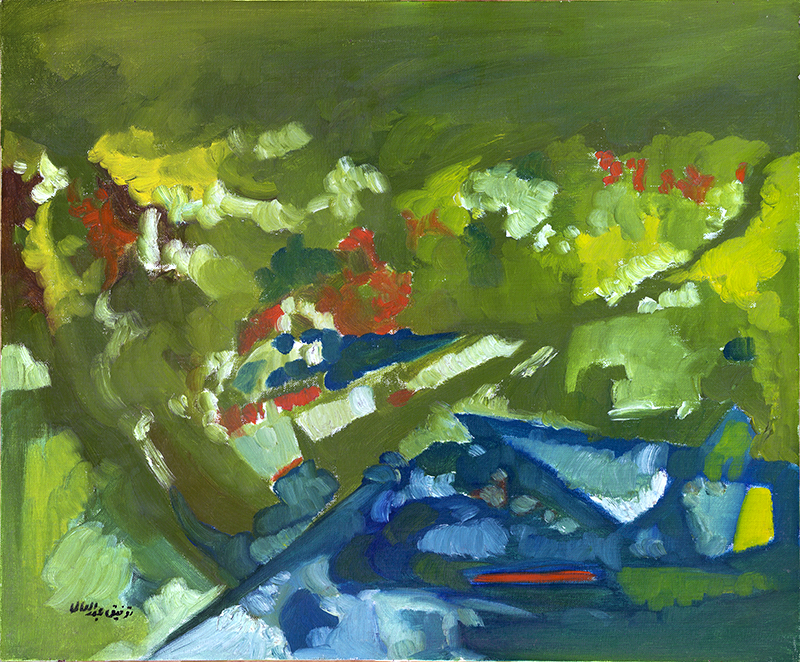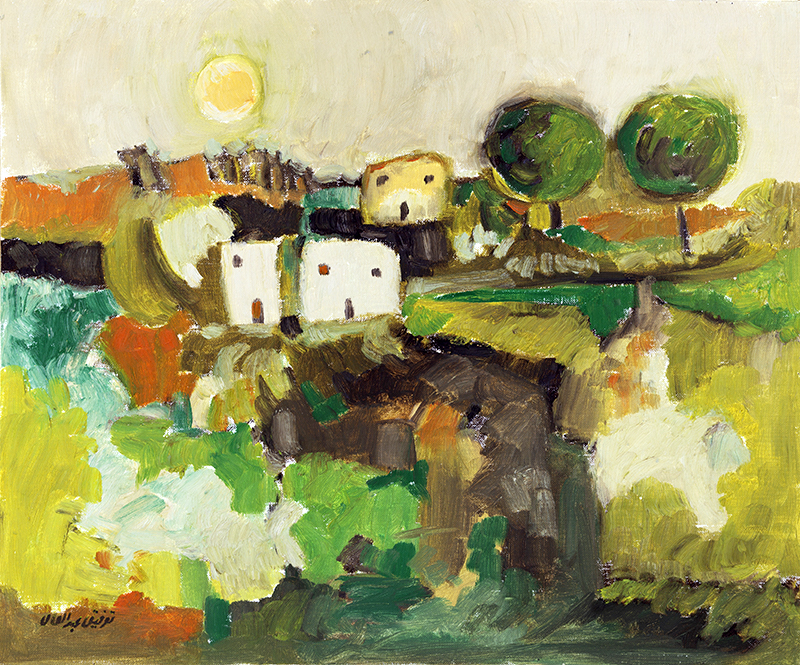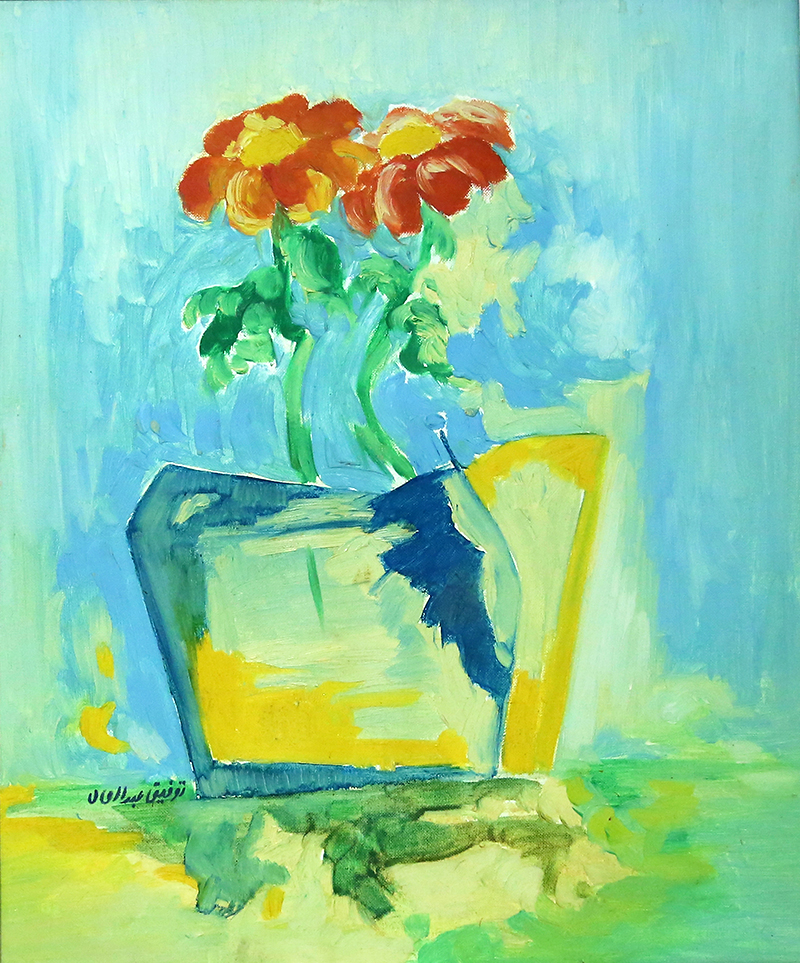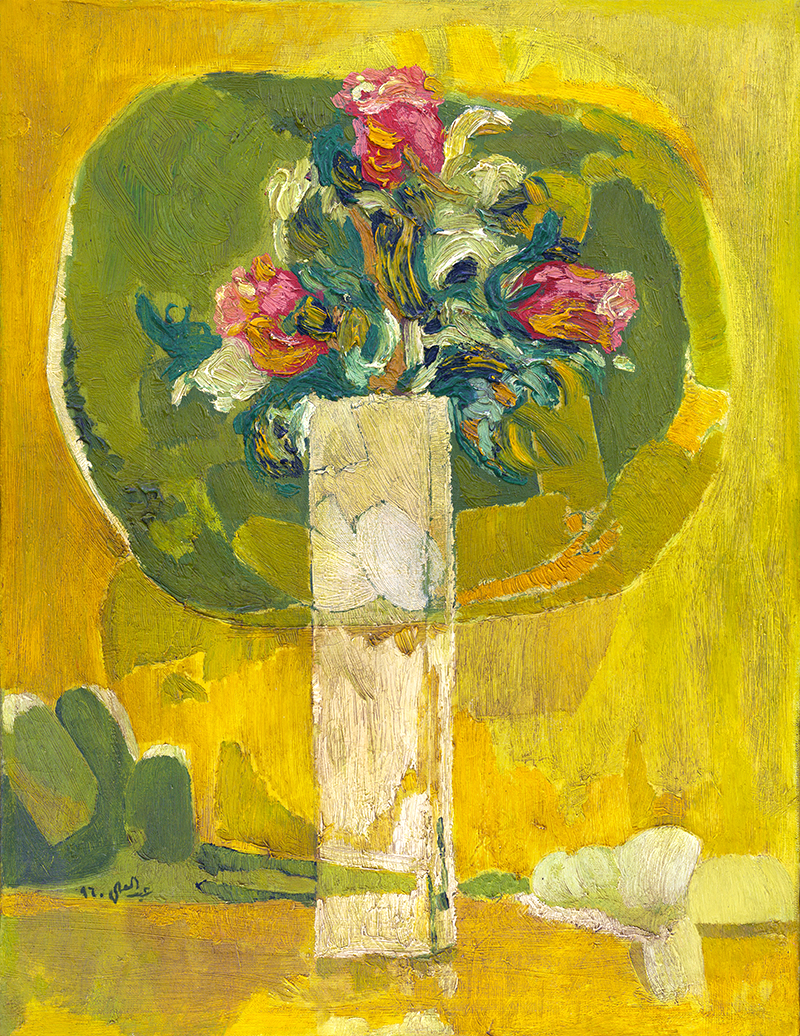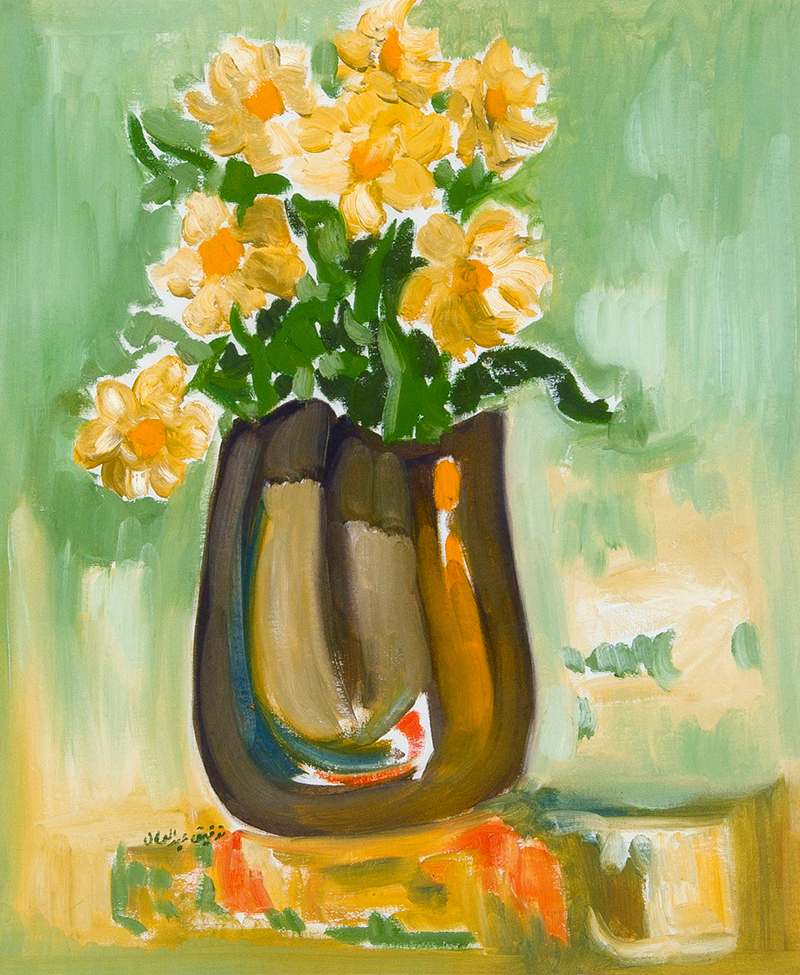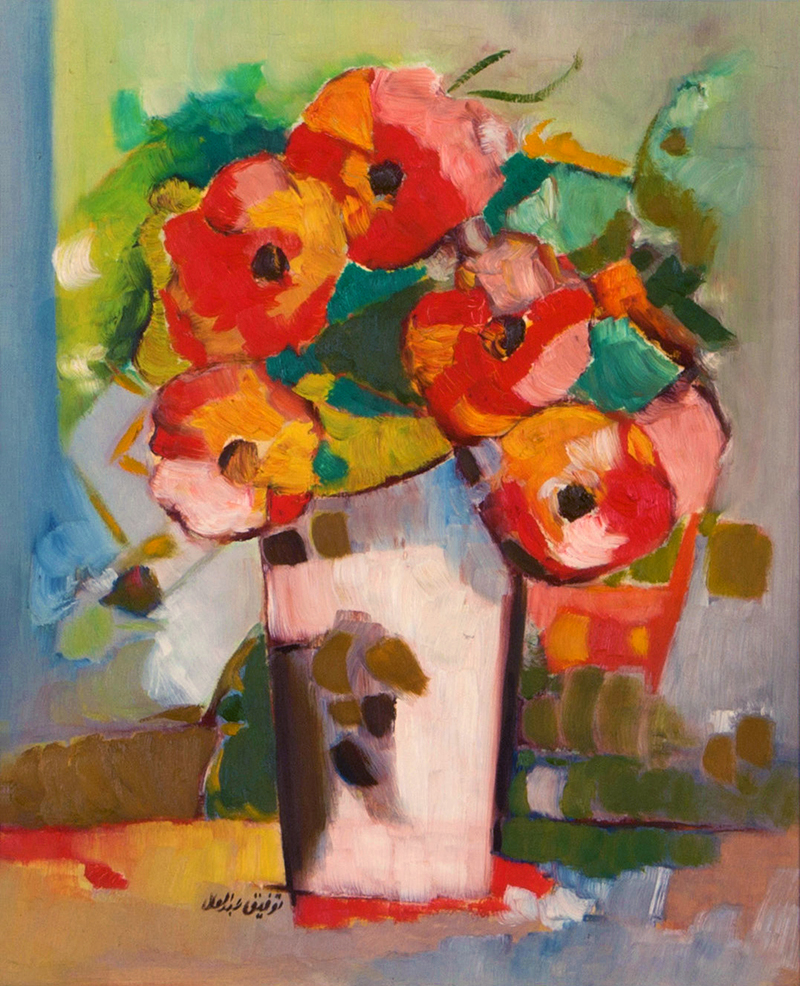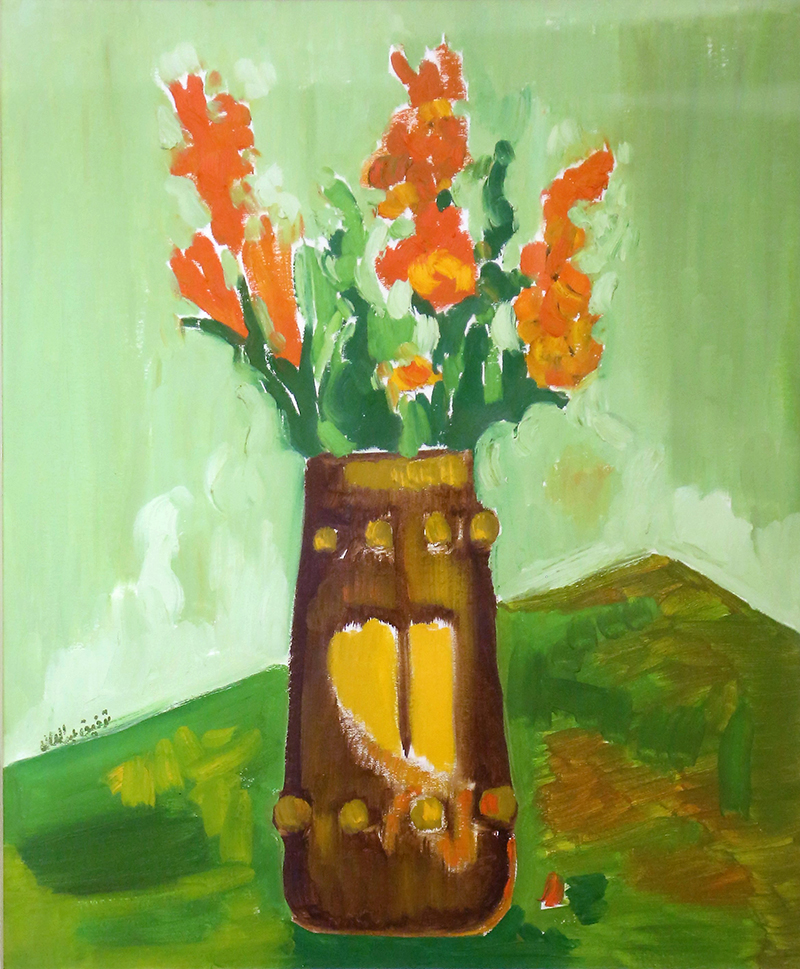Landscape
The line swims further inland, and with a photographic effect Abdul-Al tries to capture a part of the scenery that would allow him to appease the impact of the sea and reach a footing. The artist moves closer into this landscape and defines a section with a house towards the roof of trees, and a wheat field below it. There, the background changes from the watery blue to the green of the vegetation. The waviness does not subside, but it coarsens, which means it is reaching its end. The smudges or waves of colour are heavy and thick, distributed along the length of the land. Only the trees rise up somewhat straight, and the house with them. For the trees, like the house, are not at the mercy of the water, but at the mercy of the wind. By drawing them, Abdul-Al anchors the land and reduces its undulation, withdrawing the sea from beneath it.
Again, he approaches his photographic line from the section he captured from the unfurled, open landscape, and continues to soothe the waving, swaying land through two trees, by anchoring the house and making it the line’s destination. The closer the line comes to its foothold, the more vibrant the colours surrounding it, and the light, or rather the radiance becomes a background through which the green plants insinuate themselves. And yet the sea does not completely recede, rather it becomes a river, its course flowing from a tree in front of the house; it is not watery, but earthen, like an extension of its wooden trunk.
"The Take-off" a painting from (1973), reveals the artist’s political stand, whereby the white horse seems like calling for revolt. The horse is painted a transparent white. Its head is leaning towards the sky as if he is singing the song of freedom. The grace of its body and its posture refers to readiness to revolt. The chains constrict one of its feet while the other adheres to a red and circular formation that looks like a ball of flames. All these elements are visual signals symbolizing the moment of take-off.
Abdul-Al does not completely remove the sea from the landscape of the fields. He keeps it because on the one hand, these are coastal fields; and on the other hand, because the sea provides them with the makings of life: they keep moving in the sea’s wake, blending it with the air and the earth. Abdul-Al’s fields are alive, trees rise up in them so the waves don’t tangle them, and the house rises up to receive the falling line, a stepping ground where the line will search for what resembles its watery depth in order to inhabit it. The depth here is not only the bottom of the sea where the line originated before it entered the open sky and was born a bird, or where it reached and was born a fish; it is also the face. Its wish, upon entering the fields, is to open passageways for the people with the faces, to open the gates for the Palestinian women trapped between waiting and hoping.
